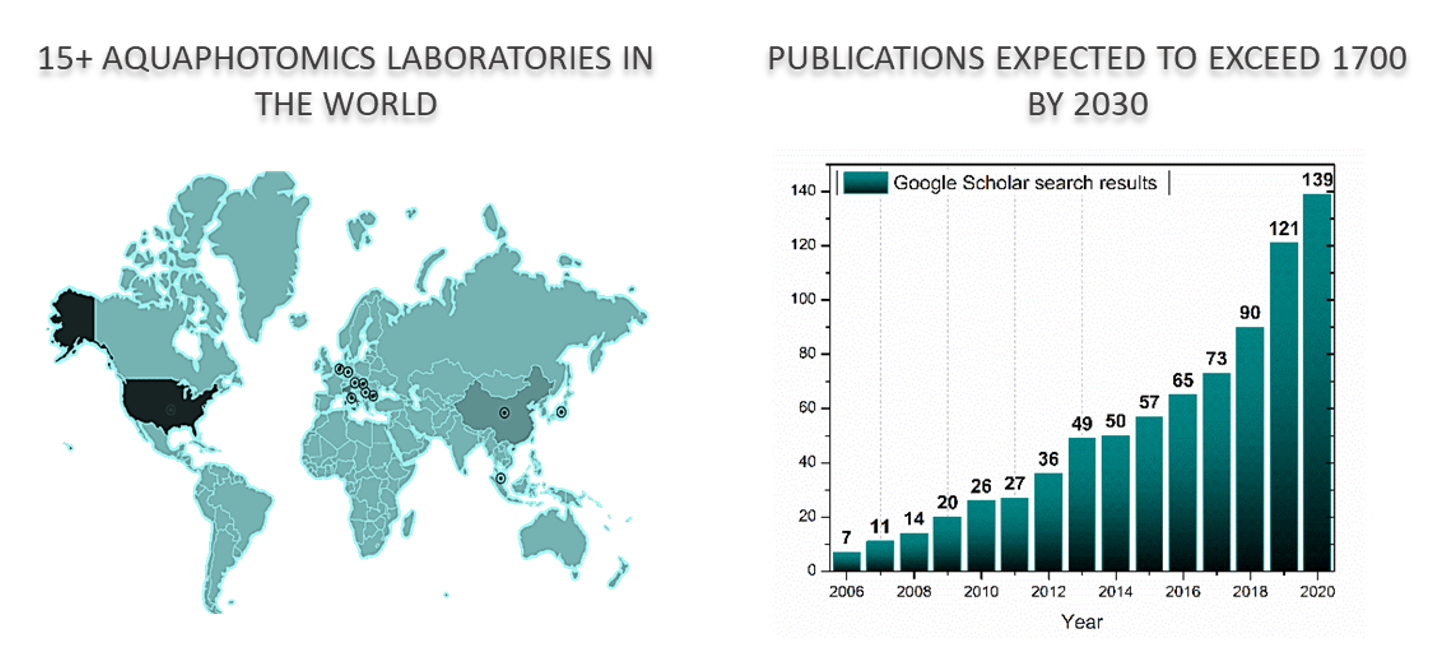Prof. Dr Roumiana Tsenkova, has long served as a professor at Kobe University and actively contributed to the development and progress of near infrared spectroscopy, by discovering and reporting for the first time that it can be used for disease diagnosis and understanding through non-invasive, non-destructive measurements of near infrared water spectral pattern.
For these achievements, she is awarded by the highest recognition in the area of near infrared spectroscopy – Tomas Hirschfield Award in 2005. At her addressing speech at that time, she for the first time, showed water in aqueous and biological systems as an ultimately sensitive molecular matrix, which is constantly being shaped up by other molecules and the environment. This unique ability makes water a natural sensor, and in interaction with light, its spectrum becomes a fingerprint, an integrative marker of the analyzed system that speaks of its functionality.
Given the challenges of the modern world: the increase in population, pollution, climate changes, rapidly spreading new types of diseases, difficulties in sustainable food production with plants and animal exposed to stress in the ever changing environment - the availability of a single measurement technology, which in a non-destructive, real-time manner offers measurements of multiple parameters simultaneously and also provides an alternative state/health assessment through the use of water spectral pattern as an integrative marker/biomarker, is a game-changing tool that will bring the societal transformation.

Development and dissemination of scientific and technological breakthroughs of aquaphotomics in a variety of research fields and applications demonstrated a feasibility of a completely new way of analysis and brought better understanding of biological and aqueous systems through the prism of their water molecular matrix. Numerous, highly cited publications attracted the number of researchers to this promising field resulting in improved methods for data analysis, development of new software packages (www.aquaphotomics.com), discovering of novel purposes for which the technology can be used and heightened interest in development of novel spectrometer systems adjusted to aquaphotomics - specific requirements.
Dr. Tsenkova’s advancement in basic science has opened up new venues for understanding of phenomena such as biomolecular structure and self-assembly, protein folding, plants stress response, oxidative stress, properties of materials and nanomaterials, water activity, and many other. New methods and instruments capable of measuring precise changes in water structure are advancing our understanding of events on a biomolecular level and disease mechanisms, their relation to the environment and offer shift from early diagnosis to prediction and prevention of diseases. New industry of big data management and analysis of spectral data coming out of in-vivo biomonitoring are utilized in food and water quality evaluation, quality monitoring of bioprocesses, monitoring the physiological status of the plants, animals, people, as well as the environment.
Good understanding of water molecular system on micro and macro level, i.e. its fractality, which Prof. Tsenkova presented in her talk at the “International Conference on the Physics, Chemistry and Biology of Water” in 2016, will help the development of harmonious biological development and improve the ecological forecasting. Developing a technology that can measure changes in water structure with high accuracy is a milestone for a future “water molecular engineering” and “water design” that will aim directly at control of biosystems’ functionality and non-invasive regulation.
Dr Tsenkova’s pioneering work is now becoming a part of the mainstream science. Since the introduction of aquaphotomics, the number of laboratories practicing aquaphotomics in the world increased to 12, established by the former students and dispersed across all continents. The International Aquaphotomics Society is established in 2018 bringing together around 150 world members. Biannual International Aquaphotomics Conference will soon mark the 10th anniversary, while regional chapters in Europe, China and Japan are held every year since 2016. Scientists from various backgrounds are already applying Aquaphotomics in a range of fields from agriculture, food engineering, chemical engineering, material science, biomedical science, biotehnology and many more. In 2017, Prof. Tsenkova’s has promoted the establishment of the European, Chinese and Japanese Aquaphotomics Societies with the goal of promoting mutual collaboration and translating the results from the scientific research to the technological development and practical applications. Japanese Foundation for Promotion of Aquaphotomics Research (http://shizuku.or.jp/) has been established to support doctoral and postdoctoral fellows wishing to expand their knowledge in this field.
By establishing the foundation of Aquaphotomics, Dr. Tsenkova’s achievements push the advance in the understanding of the water and sharing the knowledge to the society in a way easily acceptable to all people. And in 2021, for the first time in the world, within Kobe University in Japan, an Aquaphotomics Field is established. With water being such a crucial component in life, it will certainly lead to better understanding of life itself in the future.